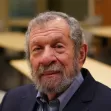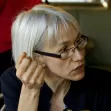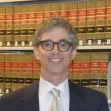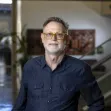The Daily Source of Urban Planning News
Indonesians Create a Replica Of Singapore To Escape Congestion
Indonesia cities are the product of sparse planning, floods, overdevelopment, brownouts and epic traffic jams magnified by the dearth of public transit. In response, private planned cities like CitraLand's Singapore of Surabaya are growing rapidly.
Portland's Latest Plaza
Linda Baker reviews the new Simon and Helen Director Park in Portland, Oregon, which she says "resembles an elegant Italian piazza."
AEG Making Downtown L.A. NFL Stadium Pitch
Having brought the Staples Center, L.A. Live, and a convention center hotel complex to the South Park neighborhood in Downtown Los Angeles, Tim Leiweke, is now pitching an NFL stadium that will double as an addendum to the convention center.
Cities Preparing for Lower Revenues
As recession-reduced property tax levels begin to play out in cities across the U.S., municipalities are beginning to react to the realities of lowered revenues.
Do Architects Have A Napoleon Complex?
I.M. Pei, Robert A.M. Stern, Daniel Libeskind, Louis Kahn, Frank Gehry - all of these architects were height-challenged. Witold Rybczynski writes in Slate about why great architects are usually short and what that means for the built environment.
Top 10 Architecture Books of 2010
Norman Weinstein of The Architectural Record selects his favorite architecture books of the year, which range from a coming-of-age memoir to a treatise on Turkish art and architecture.
Local Digital Media Outlets Galvanize Neighborhoods
Washington's panoply of hyperlocal news media is filling the holes left by tradition outlets as web 2.0 expands. Since many of the local newspapers have folded, bloggers and other digital media have grown to cover matters at the local level.
Debate Rages Over Urban Chickens
As reporter Carrie Wells writes, "Who knew chickens could create so much controversy?" The Sarasota Planning Board is considering legalizing backyard chickens, and residents on both sides are up in arms.
China's Cities Growing Beyond the Second Tier
The urbanization of China and the growth of new labor-rich cities is only just beginning, according to this piece from Dan Steinbock.
Suburb To City: No More Congestion Pricing, Please
San Mateo County officials have a bone to pick with their bigger neighbor (in population, not area) to the north, San Francisco: don't charge us to drive there. Unlike drivers from East and North Bay counties, no bridge tolls separate the counties.
The Most Dynamic Cities in the Post-Crash World
A new report from the Brookings Institution lists the 30 most dynamic cities in the world -- cities that are recovering from the global economic downturn with growth in employment and income.
Ridership Predictions Lowered, But Subway Plans Move Ahead
Despite predictions of ridership that are lower than previously thought, the San Francisco Municipal Transportation Agency is still pushing ahead with plans to build a subway line in the center of the city.
Growing Density Worries B&B Owner
Vancouver's Cambie Street corridor is targeted for increased density by the city's planning department, with buildings up to 12 stories. A bed-and-breakfast owner who has run her business in the neighborhood since 1972 says enough is enough.
Proposed Detroit-Windsor Bridge Tabled
A Michigan Senate committee voted against a bill to create a public-private partnership to oversee land acquisition, construction and management of the planned Detroit River International Crossing, putting the project on hold until at least 2011.
7 Reasons Why Big Cities Matter
Writing for <em>City Journal</em>, Mario Polese argues that big cities are more important than ever, and backs up his argument with seven reasons they're luring people, from economies of scale to falling transportation and communication costs.
Nature-Mimicking Infrastructure: 21st Century Technology?
Andy Lipkis, the founder and president of TreePeople, an organization in Los Angeles that brings natural concepts into the "urban forest", details his 40 years of work proving the feasibility of projects such as the Elmer Avenue Project.
New Toronto Mayor Kills Transit Dreams
The newly installed mayor of Toronto has swiftly abandoned an $8.1 billion mass transit plan for the city.
Renewable Energy A'Plenty On New Ellis Island Ferry
Billed as the world's first hybrid ferry, the new ships will run on a combination of wind, solar and hydrogen power (and diesel in a pinch). Service begins in April 2011.
Abandonment and Perseverance in Cleveland
Basketball star LeBron James was the king of Cleveland. Then he left town -- a move that says a lot about the city's past and its future.
Dark Clouds Over L.A.'s Light Rail
Los Angeles is in the midst of expanding its light rail system. But a new idea to speed up the process has backfired and caused delays and major increases in estimated costs.
Pagination
Yukon Government
Caltrans
New Jersey Institute of Technology
Mpact (founded as Rail~Volution)
City of Camden Redevelopment Agency
City of Norman, Oklahoma
City of Portland
City of Laramie
Urban Design for Planners 1: Software Tools
This six-course series explores essential urban design concepts using open source software and equips planners with the tools they need to participate fully in the urban design process.
Planning for Universal Design
Learn the tools for implementing Universal Design in planning regulations.


































